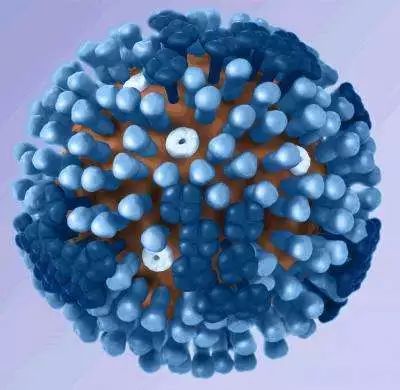【有奖翻译】新紫外线可杀死流感病毒,且无皮肤癌风险!
点击上方“转化医学网”订阅我们!
干货 | 靠谱 | 实用
第 31 弹
Title:Special UV light safely kills airborne flu virus, finds study
Continuous low doses of far ultraviolet C (far-UVC) light can kill airborne flu viruses without harming human tissues, according to a new study at the Center for Radiological Research at Columbia University Irving Medical Center (CUIMC). The findings suggest that use of overhead far-UVC light in hospitals, doctors' offices, schools, airports, airplanes, and other public spaces could provide a powerful check on seasonal influenza epidemics, as well as influenza pandemics.
The study was published online today in Scientific Reports.
Scientists have known for decades that broad-spectrum UVC light, which has a wavelength of between 200 to 400 nanometers, or nm), is highly effective at killing bacteria and viruses by destroying the molecular bonds that hold their DNA together. This conventional UV light is routinely used to decontaminate surgical equipment. "Unfortunately, conventional germicidal UV light is also a human health hazard and can lead to skin cancer and cataracts, which prevents its use in public spaces," said study leader David J. Brenner, PhD, the Higgins Professor of Radiation Biophysics Professor of Environmental Health Sciences and director of the Center for Radiological Research at CUIMC.
Several years ago, Dr. Brenner and his colleagues hypothesized that a narrow spectrum of ultraviolet light called far-UVC could kill microbes without damaging healthy tissue. "Far-UVC light has a very limited range and cannot penetrate through the outer dead-cell layer of human skin or the tear layer in the eye, so it's not a human health hazard. But because viruses and bacteria are much smaller than human cells, far-UVC light can reach their DNA and kill them," he said.
In their earlier studies, Dr. Brenner's team demonstrated that far-UVC light was effective at killing MRSA(methicillin-resistant S. aureus) bacteria, a common cause of surgical wound infections, but without harminghuman or mouse skin.
Influenza virus spreads from person to person mainly through fine liquid droplets, or aerosols, that become airborne when people with flu cough, sneeze, or talk. The new study was designed to test if far-UVC light could efficiently kill aerosolized influenza virus in the air, in a setting similar to a public space. In the study, aerosolized H1N1 virus—a common strain of flu virus—was released into a test chamber and exposed to very low doses of 222 nm far-UVC light. A control group of aerosolized virus was not exposed to the UVC light. The far-UVC light efficiently inactivated the flu viruses, with about the same efficiency as conventional germicidal UV light.
"If our results are confirmed in other settings, it follows that the use of overhead low-level far-UVC light in public locations would be a safe and efficient method for limiting the transmission and spread of airborne-mediated microbial diseases, such as influenza and tuberculosis," said Dr. Brenner.
At a price of less than $1,000 per lamp—a cost that would surely decrease if the lamps were mass produced— far-UVC lights are relatively inexpensive. "And unlike flu vaccines, far-UVC is likely to be effective against all airborne microbes, even newly emerging strains."
The study is titled, "Far-UVC light: A new tool to control the spread of airborne-mediated microbial diseases." The other contributors are David Welch, Manuela Buonanno, Veljko Grilj, Igor Shuryak, Connor Crickmore, Alan Bigelow, Gerhard Randers-Pehrson, and Gary Johnson (all at CUIMC).
参考文献:
David Welch et al, Far-UVC light: A new tool to control the spread of airborne-mediated microbial diseases, Scientific Reports (2018).
投稿邮箱:zhangli@360zhyx.com
投稿规则
1.本次活动为自愿参加,关注每日文章推送即可,每周一、周三、周五发布翻译稿件,周二、周四、周六进行翻译文章刊登;每篇文章投稿时间为2天,周一的推送截止翻译日期为当周周三,以此类推,节假日顺延投稿时间
2.投稿形式:以word文字版为准,文件名为:第几弹+姓名 。以附件形式发送至投稿邮箱。
3.参与活动均可获得转化医学网小礼品(价值30元左右)1份,被录取的文章将得到100元/篇的稿酬;您可在邮件正文或附件中留下地址号码领取礼物,因为礼物的邮寄可能需要一段时间,请您耐心等待
4.投稿文件转化医学网编辑部收到后,会进行审核,我们会在2~3个工作日内给与回复
5.得到文稿被录用邮件回复的作者可添加转化医学网内容部同事微信领取相应微信红包
6.本次活动最终解释权归转化医学网所有
END
转折点——生物医药招聘第一平台








